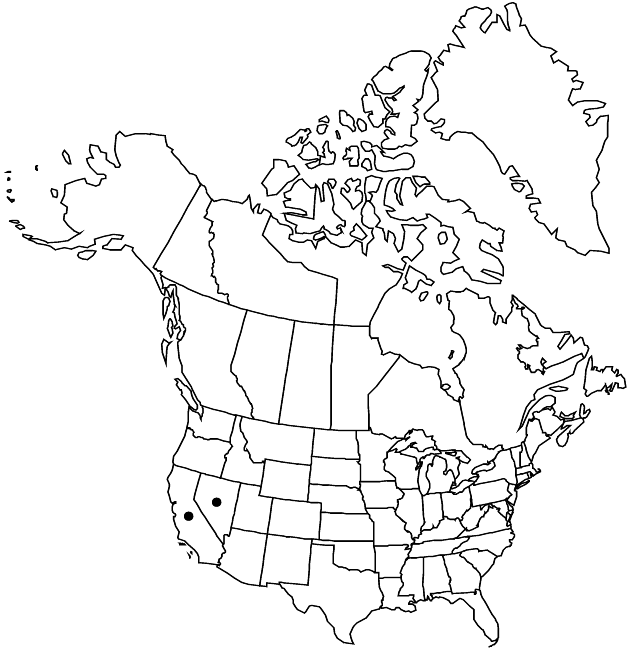Crepis runcinata subsp. andersonii
Publ. Carnegie Inst. Wash. 504: 104. 1938.
Common names: Anderson’s hawksbeard
Endemic
Basionym: Crepis andersonii A. Gray Proc. Amer. Acad. Arts 6: 553. 1865
Synonyms: Crepis runcinata var. andersonii (A. Gray) Cronquist
Revision as of 19:09, 29 July 2020 by imported>Volume Importer
Plants 25–50 cm. Leaves: petioles broadly winged; blades oblanceolate, 2–3 cm wide, margins strongly and coarsely serrate or toothed (teeth prominently white-tipped), faces glabrous or hispidulous. Heads 6–20. Involucres 19–21 mm. Phyllaries broadly lanceolate, apices long-acuminate, faces usually stipitate-glandular. Cypselae pale-yellow to reddish-brown, 6–8 mm, ± distinctly beaked; pappi 6–9 mm. 2n = 22.
Phenology: Flowering May–Jul.
Habitat: Alkaline seeps, grasslands, moist alkaline valley bottoms
Elevation: 1200–1500 m
Discussion
Subspecies andersonii is identified mainly by the relatively large involucres with densely stipitate-glandular phyllaries and the leaf margins with sharp, prominently white-tipped teeth.
Selected References
None.
Lower Taxa
None.
"fine" is not a number.
... more about "Crepis runcinata subsp. andersonii"
glabrous +
tailed +
introrse +
connate +
long-acuminate +
scarious +
developed +
absent +
hirsute +
papillate +
corymbiform +
persistent +
falling +
continuous +
decurrent +
oblanceolate +
winged +
ribbed +
1;15 +
unequal +
filiform +
stigmatic +
barbellulate +
coarse +
absent +
reduced +
absent +
reduced +
Anderson’s hawksbeard +
golden yellow +
monomorphic +
curved +
dimorphic +
6mm;8mm +
straight +
distinct +
ligulate +
proximal +
20;50 +
bisexual +
dispersed +
appressed +
subsessile +
indeterminate +
6;20 +
homogamous +
surrounding +
turbinate-campanulate +
petiolate +
alternate +
basal +
toothed +
prickly +
scarious +
2-carpellate +
inferior +
attached +
anatropous +
white +
persistent +
falling +
coarse +
equal +
fine +
not bracteate +
inflated +
tough +
thick +
connate +
winged +
persistent +
subequal +
equal +
Publ. Carnegie Inst. Wash. +
1938 +
epaleate +
pitted +
convex;flat +
spiculate-roughened +
fibrous +
exalbuminous +
modifed +
1;2 +
Endemic +
alternate +
branched +
scapiform +
2-branched +
hirsute +
papillate +
Crepis runcinata subsp. andersonii +
Crepis runcinata +
subspecies +
perennial +
